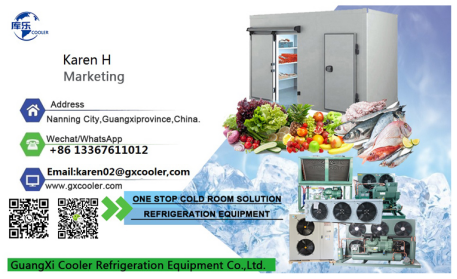In general, there are two methods of preservation:
1. Physical methods mainly include: low temperature storage, controlled atmosphere storage, decompression storage, electromagnetic radiation storage, etc. Among them, the more advanced fresh-keeping technologies mainly include critical low-temperature and high-humidity fresh-keeping, intercellular water structured modified atmosphere fresh-keeping, ozone-modulated air-conditioned fresh-keeping, etc. Although these fresh-keeping technologies are widely used, they require special equipment, complicated operations, high costs, and large There are some difficulties in using it.
2. Chemical methods mainly contain fresh-keeping agents. Common preservatives include: paint smears, ethylene treatment agents (absorbents), bactericidal antiseptic preservatives, etc. If it is used for household fresh-keeping, it is recommended to use less chemical preservatives. Generally, physical methods are used, such as low-temperature storage (refrigerator), cellar, exhaust sealing or placing in water (low temperature and high humidity), and often need the assistance of fresh-keeping cold storage .
In terms of subdivision, there are ten specific methods (in most cases, the participation of fresh-keeping cold storage is required):
1. New film preservation:
This is a one-time consumer hygroscopic and fresh-keeping plastic packaging film developed by Japan. It is composed of two translucent nylon films with strong water permeability, and natural paste and high osmotic pressure are installed between the films. The high-quality granulated sugar syrup can slowly absorb the water seeping from the surface of vegetables, fruits and meat, so as to keep fresh.
2. Microwave preservation
This is a fresh-keeping method for low-temperature disinfection of fruits, vegetables and fish by a company in the Netherlands. It uses microwaves to heat it up to 72°C in a short period of time (120s), and then puts the processed food on the market at 0-4°C, and can be stored for 42-45 days without deterioration. It is suitable for the supply of "seasonal vegetables and fruits" in the off-season, and is favored by people.
3. Edible vegetable and fruit preservatives:
This is an edible vegetable and fruit preservative developed by a British food association. It is a "translucent emulsion" formulated with sucrose, starch, fatty acid and polyester. It can be sprayed, brushed, and dipped in watermelon, tomato, bell pepper, eggplant, cucumber, apple, etc. The freshness period of bananas and other surfaces can be as long as 200 days or more. This is because this preservative forms a "sealing film" on the surface of fruits and vegetables, which completely prevents oxygen from entering the interior of fruits and vegetables, thereby achieving the purpose of prolonging the ripening process of fruits and vegetables and enhancing the preservation effect.
4. Fresh-keeping carton
This is a new type of carton developed by the Japan Food Distribution System Association. The researchers used a "Ristobalite" (a type of silicate) as an additive to the pulp. Because this kind of stone powder has a good adsorption effect on various gases, and the weight of fresh vegetables and fruits will not be reduced, so merchants love to use it, and it is unique for long-distance storage and transportation.
5. Hydrocarbon mixture preservation method:
This is a "natural edible preservative" developed by a British Sempei Biotechnology Company that can double the storage life of tomatoes, peppers, pears, grapes and other fruits and vegetables. It uses a complex mixture of hydrocarbons. When in use, it is dissolved in water to form a solution state, and then the vegetables and fruits to be kept fresh are soaked in the solution, so that the surface of the vegetables and fruits is evenly coated with a layer of liquid agent. This will greatly reduce the amount of oxygen absorbed, so that almost all the carbon dioxide produced by fruits and vegetables will be discharged. Therefore, the effect of the preservative and the low temperature of the fresh-keeping cold storage are exactly like "anesthetics" applied to the fruits and vegetables, making them in a dormant state.
6. Ceramic fresh-keeping bags:
This is a vegetable and fruit fresh-keeping bag with far-infrared effect developed by a Japanese company. It is mainly coated with a very thin layer of ceramic material on the inside of the bag, and the infrared rays released by the ceramic can produce moisture in the fruits and vegetables. The strong "resonance" movement promotes the preservation of fruits and vegetables.
7. Electronic Technology Preservation Method:
This is achieved by using the negative oxygen ions and ozone generated by the high-voltage negative electrostatic field. Negative oxygen ions can passivate the metabolic enzymes of fruits and vegetables, thereby reducing the respiration intensity of fruits and vegetables and weakening the production of ethylene as a fruit ripening agent. Ozone is a strong oxidant and a good disinfectant and bactericide, which can not only kill and eliminate microorganisms and toxins secreted on fruits and vegetables, but also inhibit and delay the hydrolysis of organic matter in fruits and vegetables, thereby prolonging the storage period of fruits and vegetables.
8. Decompression preservation method:
This is an emerging method of storing fruits and vegetables, which has a good fresh-keeping effect, and has the advantages of convenient management, simple operation, and low cost. Some countries such as the United Kingdom, the United States, Germany, and France have developed low-pressure containers with standard specifications. , has been widely used in long-distance transport of fruits and vegetables.
9. Pressure preservation:
It was successfully developed by the Food Science Institute of Kyoto University in Japan. It uses pressure to make food. Vegetables can be kept fresh for longer and fresher after sterilization. However, acid can’t work under pressure, so it is best to eat In the best state, it is ideal to preserve pickles and fruits.
10. Microbial preservation method:
Ethylene has the effect of promoting the aging and ripening of fruits and vegetables, so in order to keep fruits and vegetables fresh, ethylene must be removed. After screening and research, scientists have isolated a "NH-9 strain" that can produce "ethylene remover NH-T" substances that remove ethylene, which can prevent browning, loosening, and grain loss during grape storage. Tomatoes and peppers can prevent water loss, discoloration and softening, and have obvious fresh-keeping effects.
Post time: Nov-26-2022






